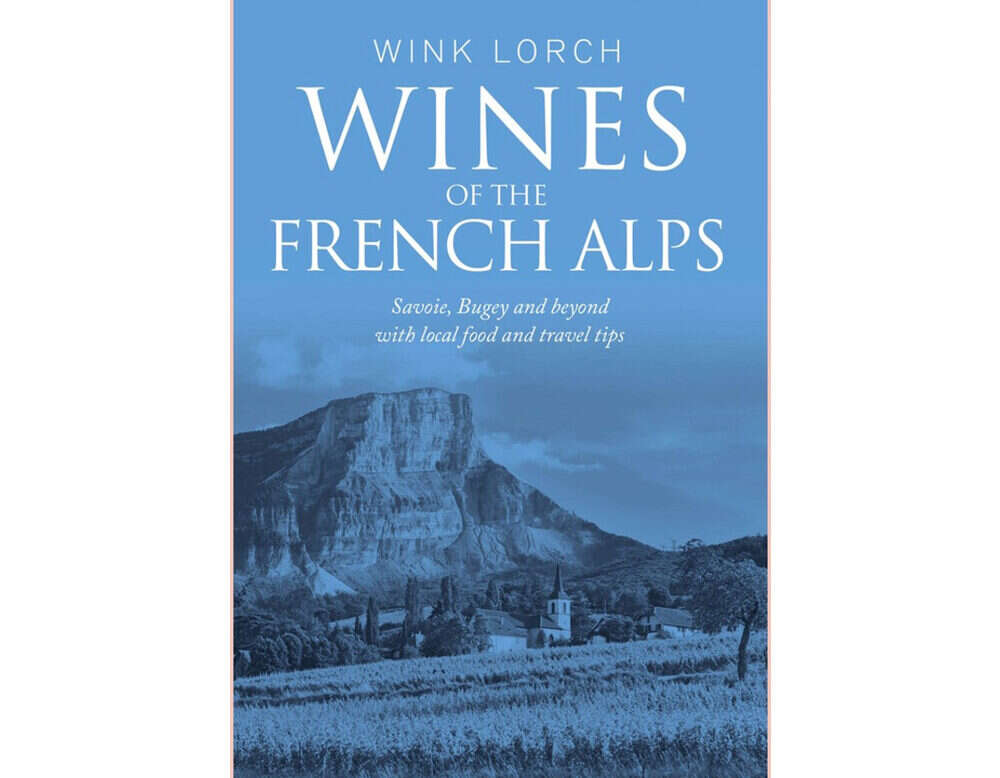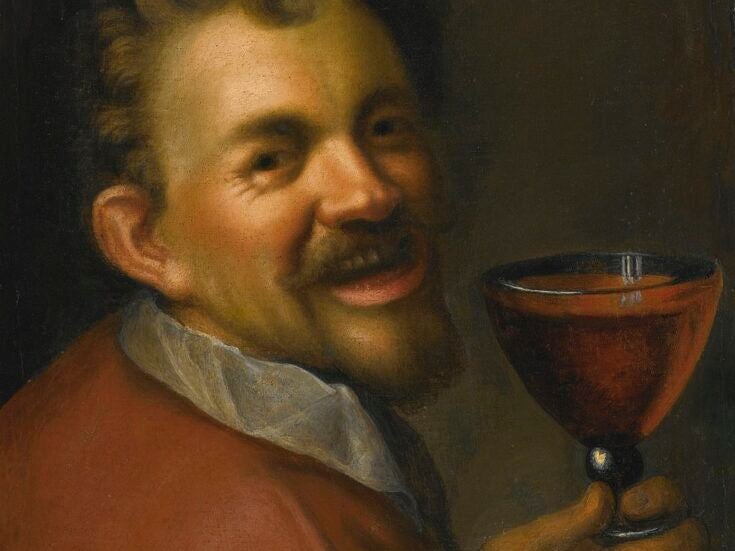
The perfect guide to an underappreciated region—and a model for others
Enophiles familiar with Wink Lorch’s 2014 Jura Wine (and those who aren’t should be) will have been waiting with baited breath for her long-promised follow-up covering (to quote its subtitle) “Savoie, Bugey and beyond” and will expect to find an engagingly elucidated and beautifully packaged wealth of otherwise inaccessible information. They will not be disappointed. It would be hard to imagine a more successful introduction to any corner of the wine-growing world, and few corners suffer from less-justified neglect. Whereas at least within France and the United States, wines of the Jura could boast recently acquired cachet by the time Lorch tackled that topic, when it comes to the subjects of this latest book, a ripple of attention in Paris and the US East Coast seems to be about as much buzz as has recently penetrated beyond the Alpine foothills. Granted, as Lorch notes, we’re talking about a total vine acreage not even one third of that of Alsace. But it houses a staggering range of grape varieties, microclimates, methods, and traditions, issuing in some of the world’s most distinctively delicious wines.
The “beyond” of Lorch’s subtitle encompasses the Hautes-Alpes that border Provence; the Dios (straddling the River Drôme and known for Clairette de Die); and selected portions of the Isère— ones relatively near to the Rhône and to those parts of Bugey that hug that river’s right bank. Especially welcome in a book treating regions as little known as these, a dozen superbly executed maps are included, ten of which were produced by Quentin Sadler expressly for her book and manage through an uncluttered combination of color-coding, numbering, and lettering to render perspicuous the boundaries of AOCs and IGPs, the locations of all profiled establishments, as well as a wealth of topographical detail. Like her other introductory chapters, Lorch’s fascinating account of Alpine regional history is replete with informative and intriguing sidebars of up to a page. “Movements and people that have influenced the wines today” are the subjects of a subsequent chapter that, like Lorch’s book as a whole, ranges from articulate assessments of scientific achievements to “how spas and snow saved Savoie wine” and incorporates an inspiring account of the recent “movement to replant some of the old hillside vineyards, abandoned [for] decades, or sometimes longer.” It perhaps goes without saying that Lorch’s entire text is sprinkled with colorful glimpses into the peculiar challenges of steep-slope viticulture and the technical means, as well as the risk-taking, required to surmount them.
Alongside lucid, concise, but adequately comprehensive accounts of terroir and relevant wine law, as well as viticultural and vinificatory techniques (with an apt explication of sparklingwine methodology and nomenclature), Lorch points with particular pride to her chapter on grape varieties. Thirteen “main” cépages—many indigenous or virtually unique to these Alpine regions—are profiled in detail, with scarcely less attention being devoted to seven further “rare local varieties,” on top of which Lorch covers briefly some dozen “other”—more familiar—cépages and a half-dozen “very rare” local ones. Correspondingly, the other chapters in her book, including the producer profiles (with regional introductions) that make up just over half of it, highlight instances where traditional indigenous varieties are being propagated via massal selection and in numerous instances brought back from near-extinction, especially by intrepid young growers.
Comprehensive and constructive
Although Lorch makes the apologies usual in a book of this sort for having reluctantly been compelled by space considerations to limit the estates profiled, she offers far more comprehensive coverage than anyone not already familiar with her book on the Jura would expect from any regional guide. To begin with, the 113 profiles in question, which usually include a photograph, run a generous one to three pages each, replete with details of history, human interest, viticultural and vinificatory regimen, plus portfolio assessments and constructive criticism. A sidebar summarizes contact details, with map references and visiting policies. Sundry recently established estates are profiled with emphasis on their potential —it’s heartening how many people trained at prestigious and far-flung addresses have elected to put down roots in the French Alps—but Lorch does not neglect any well-established producers, while chiding some for underperforming. And on top of all this generosity, Lorch devotes several sentences each to many additional growers, especially newcomers but also some who have recently (alas) closed up shop.
An especially valuable aspect of this book is Lorch’s approach to appellations and classifications. A fine-print appendix supplies the legal minutiae relevant to each AOC, and her summaries of AOCs and IGPs critically call attention to many instances where wine politics, groupthink, and sometimes apparent willfulness have resulted in regulations that inhibit growers from more effectively marketing or informatively labeling their wines— and discourage the revival of traditional grape varieties or the presence of cépages in places where history, as well as contemporary success, demonstrate that they belong. What Lorch dubs the Savoie’s “Crazy Crémant rule”—forcing the region’s most widely planted grape, Jacquère, on sectors known for sparkling wine but in which that grape was never planted—is unsparingly characterized as “mak[ing] a complete mockery of the INAO supposedly upholding local traditions with its rules.” She is being charitable in titling another sidebar “Strange restrictions for Savoie’s rare grapes,” but then leaves no doubt about how she really feels. “The law is an ass indeed,” she concludes, “for these rare grapes potentially add to the excitement and interest of Savoie wines around the world, and without the Savoie name on the label, the region misses out.” And so does the wine lover.
Restrictions on the use of “Savoie” (as in “AOC Savoie”) are merely among the more egregious of many instances highlighted throughout Lorch’s book to illustrate how the monopolization and alleged protection of place name often benefits interested parties but not the consumer, the innovative grower, or the promotion of French Alpine regions as a whole. In passages such as are sadly missing from many a guide book to European wines, Lorch explains how the geographical specificity and alleged classificatory prestige of the wine name registered by a grower is often determined by perceived marketing convenience or by small stylistic, vinificatory, or viticultural deviations from a norm that he or she considers inimical to quality and ultimately arbitrary. We learn, for example, that the growers in Crépy relinquished that commune’s status as a self-standing appellation simply so that the betterknown and geographically recognizable name “Savoie” could appear prominently on their wines’ labels. And Lorch lets readers in on the lamentable truth— applicable EU-wide—that new regulatory complications and classifications keep coming relentlessly, driven in large part by manic bureaucratic aggrandizement.
Appetizing and enticing
It’s a shame, as Lorch notes in her concluding assessment of “The Future for French Alpine Wines,” that lack of cooperation among these regions, or between cliques within them, impedes wider recognition of their vinous treasures or indeed of a collective Alpine viticultural area—precisely the ends she is passionately pursuing with her book. “Vins des Coteaux Alpins (Wines from Alpine Slopes) is a perfect name for a [collaborative] group,” but Lorch reports that “aside from a rarely updated website, it has been little publicized.” In fact, this group’s official website is lovely, but its principal limitation is a glaring example of what holds back self-promotion in so many French wine-growing regions: It references solely growers that bottle exclusively under one of the relevant IGP designations—Allobroges, Coteaux de l’Ain, and Isère. So, on the site’s interactive map, it’s as though the appellations of the Savoie and Bugey don’t exist. Lorch points out the powerful role that social media can play in creating good regional vibes. And it’s not as though enophiles have to head to the scenically and recreationally plenteous Alps looking for wine—she herself discovered the wines in the mid-1980s as a ski tourist. That said, readers of this book are going to come away with an appetite whetted for people, places, grapes, and wines on which they now realize they have been missing out.
Enticing and insightful mini-guides to Alpine cheeses and other local comestible specialties, as well as to Alpine liqueurs, occupy 28 pages late in Lorch’s book. There is a critical list of local lodging and restaurants; a thorough index, bibliography, and glossary; and brief guides to conversion and (how refreshingly welcome!) pronunciation. Fitting for such scenic as well as viticulturally and geologically diverse regions, more than 200 often gorgeous color photographs are included, around half of them commissioned from Mick Rock, and the rest taken by Lorch or the late Brett Jones, her longtime companion to whom the book is dedicated. Lorch was without question greatly relieved when her prolonged labors— coinciding with a period of personal tragedy—finally issued in this superb book. Yet would that she could apply her talent and diligence to other parts of viticultural France, very much including well-known ones, few of which have ever been treated in such knowledgeable, stylistically delightful, succinct yet thorough, technically sophisticated yet amateur-friendly fashion.
Self-published by Wine Travel Media (2019); 384 pages; US price variable / £25. Available via winetravelmedia.com/shop






